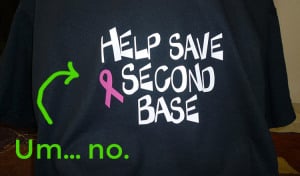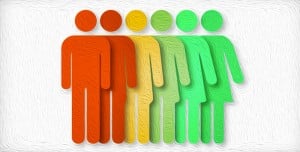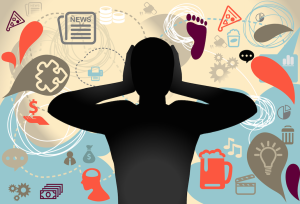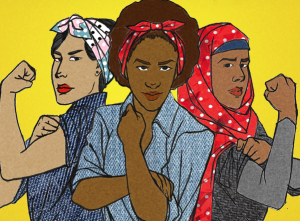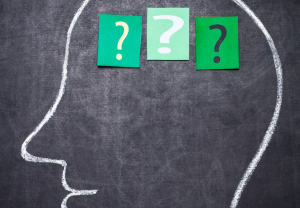
Source: Nichelle Mitchem
For some, the LGBPTTQQIIAA+ acronym (better known in some circles as “Queer alphabet soup”) can be intimidating in its all-inclusivity – “how on Earth am I supposed to not only memorize every identity in this nebula, but learn to respect them in my everyday life as well?”
Well worry not, kind feminist!
Just as how shaking hands and sitting down to a nice cup of tea with someone can give you a deeper and more personal understanding of them, getting to know the basics about these identities will help to ease this overwhelmed feeling.
So let’s explore one specific identity in this acronym today – pansexuality.
Brief Overview and History
First, let’s break down the word by its parts.
“Pan-“ is a Greek prefix referring to “all” or “every” coming together as one.
Some examples of other words that use this prefix are “panacea” (something that would remedy all illnesses, otherwise known as a cure-all), “Pangea” (the early continent in Earth’s history that contained all 7 of the continents together as one land mass) and the “Panopticon” (a prison structure where one guard can see every prisoner who, in turn, can see every other prisoner – feminist and sexualities philosopher Michel Foucault used this as a metaphor for policing each other in society).
Putting this together with “-sexual”, which I’m sure we recognize as referring to one’s own sexual desires and habits, creates a word that roughly means “someone who is attracted to all sexes and genders of people.”
Similarly, “panromantic” refers to someone who is asexual, but can feel romantic attraction to all sexes and genders of people.
This word “pansexual” was originally coined by Sigmund Freud within his theories on psychoanalysis in the early-to-mid 1900s, but was instead defined as how sexual energy and desire is the basis for all human interaction in life.
However the modern usage of “pansexual” has very little to do with Freud’s definition or his psycho-sexuality theories.
Instead, the modern usage (which I am exclusively referring to in this article) likely started gaining ground in the early-to-mid 1990s.
While it’s hard to pin the exact moment when its use began, it is almost certainly tied to the growing activism and awareness of non-binary and genderqueer people since pansexuality would not exist without these identities.
This is somewhat confirmed by looking at Google Trends data, which shows that an internet presence for “pansexuality” began in September 2007, a little over a year after an internet presence for “genderqueer” began.
Since this time it has gained a lot of traction within the Queer community as an identity that is becoming more and more commonly recognized. Even one of Texas’ State Representatives, Mary Gonzalez, openly identifies as pansexual, becoming the first (and, so far, only) elected US official to be out as such.
Basics of Pansexuality
Like with any identity on the rainbow, individuals can (and will—and should!) define the identity in a way that’s more tailored to themselves. While the aforementioned definition is (technically) accurate, some pansexual people have a slightly different way of defining their identity.
For instance, the folks at Pansexuality is Perfect define it as a person who is “not limited or inhibited in sexual choice with regards to gender or activity.”
Other individuals have also described their identity by saying that “they just don’t focus on gender or sex identity, but focus more on the person instead.” (Thanks Kayla!)
While all of these ways of being pansexual are slightly different, they are all legitimate and they all help define pansexuality as the diverse, all-inclusive sexual identity that it is.
Looking at it in a practical manner, what can we know about someone if they come out to us as pansexual?
Well, one of the best parts of talking about pansexuality is that it is not gender-dependent. That means, unlike someone who identifies as gay, we don’t need to know about the individual’s gender to know what sort of people they may be attracted to.
So someone who identifies as pansexual, no matter what their gender or sex is, can potentially be attracted to cis men, intersex men, trans men, agender people, genderqueer people or any other non-binary person, trans women, intersex women, cis women, or any other combination of sex, gender, and gender performance.
For some pansexual people, these gender distinctions might be necessary to foster their attraction. Other pansexual people might just describe these distinctions as irrelevant information.
Each pansexual person might describe their identity in a unique way, but one thing remains consistent: the constant possibility of being attracted to any person of any gender and sex.
Politics of Pansexuality
Pansexuality is tightly entwined into the politics of genderqueer and non-binary activism, awareness, and progress since it cannot exist without these identities.
This history, and the political implications that follow, are some of the most important parts of pansexuality and are what primarily sets it apart as its own identity.
For instance, similarly to how bisexuality (as defined by multiple organizations) is inclusive of all and every gender, pansexuality also denies any binarist implications in its name. In fact, the creation of pansexuality as a title was to intentionally prioritize the recognition of it’s identifier’s romantic and/or sexual attractions to genderqueer, agender, and other non-binary people and politics.
While leaders and organizers within both identities work to actively include non-binary people, the bisexual community has been unfairly and inaccurately accused of binarism and other gender essentializing behavior. This, rooted in biphobia and the erasure of bi -sexuality, -identity, and -activism, has lead many to perceive pansexuality as the only anti-binary option.
While the pansexual community has done incredible movement building and intellectual/social activism work, anti-bisexual prejudice has also played a role in people believing pansexuality to be the only comfortable identity for those who are particularly passionate about advocating genderqueer diversity and acceptance. This is unfair and untrue.
The creation of the pansexual identity, however, has allowed for further and more intentional analysis and discussion of the relationship between human sexuality and gender. Beyond being a useful and real label for people to identify with, pansexuality also has begun to create waves within activism and sexuality theory.
Common Myths about Pansexuality
Now that we’ve talked about what pansexuality is, let’s talk about what it isn’t and address common myths that some people have about the identity.
Myth #1: Pansexuals are into sexual acts with pans, pots, and other various kitchen utensils.
False!
No, Pansexuality does not refer to one’s sexual attraction to pans, pots, or any other inanimate object (although if you were to taste some of my stir-fry, you may start to develop some complicated feelings toward the cookware – it’s okay, I totally wouldn’t blame you).
This territory is instead covered by object sexuality.
Myth #2: Pansexuality and bisexuality are the same thing.
…False?
This is complicated ground (which we’ll tackle in a future article), but as a general rule it’s best to recognize that pansexuality and bisexuality are different (but related) identities.
The most concise reason for this is because pansexual people can find attraction with any and all genders or sexes — usually stating that there attraction is to the person, with out gender modifiers. Bisexuality is defined as liking sex/genders one may identify with personally and sex/genders one might not identify with personally, and may have limitations for which genders and sexes they know they’re attracted to.
There are several similarities between these two, but while they’re not completely different, they’re definitely not the same either.
Myth #3: Since pansexuals are attracted to all sexes and genders, they’ll sleep with anybody.
False!
Just because a pansexual person can be attracted to anybody does not mean that they are attracted to everybody.
That’s not to say that there aren’t pansexual people who enjoy a large amount of sex—or no sex at all, for that matter! Sexual behavior and sexual identity are independent; identifying as pansexual doesn’t say anything about your sexual behavior.
Similarly, Pansexual people may (or may not) be polyamorous. Again, this identity acts independent of Pansexuality.
Myth #5: Pansexuality is a made-up Tumblr identity that doesn’t really exist.
Ugh, FALSE!
Yes, pansexuality may have a predominant culture that intersects with Tumblr users and, yes, a majority of the best information about pansexuality can be found within various posts to the website, but just because you don’t like the medium that popularized it doesn’t mean that it is illegitimate.
Identities do not exist in a vacuum – American people on Tumblr do not stop having a relationship to Western-American culture simply because they’re on Tumblr. Any oppositional consciousness they create is as legitimate from them as it is from someone who has never used the internet in their life.
Even despite this rather air-tight argument, another look at Google Trends shows that the term “pansexuality” by itself had significant web activity more than 3 years before “Tumblr pansexuality” had any sort of significant internet footprint.
So please – stop blaming Tumblr for your own prejudice against Queer identities.
***
Now that we’ve debunked some myths and defined pansexuality, hopefully you, kind feminist reader, have a deeper and more complex understanding of what it means for someone to be pansexual and about the intricacies involved in the identity.
Understanding the diversity of sexual identities has long been an important part of feminist theory and advocacy.
And keeping up with how the Queer community is evolving with (and against) hegemonic culture continues to be as important now as it has in the past—no matter what your gender or sexual identity is.
[do_widget id=”text-101″]
Kaylee Jakubowski is a Contributing Writer for Everyday Feminism. She is a trans, Queer feminist with specific interests in ecofeminism, anti-imperialism, Queerness, and statistical approaches to social justice work. Xe is pursuing a B.S. in Statistics with a minor in Women’s & Gender Studies. Feel free to Like her Facebook Page, follow her on Tumblr, or see what she’s up to musically. Read her other articles here.
Search our 3000+ articles!
Read our articles about:
Our online racial justice training
Used by hundreds of universities, non-profits, and businesses.
Click to learn more





